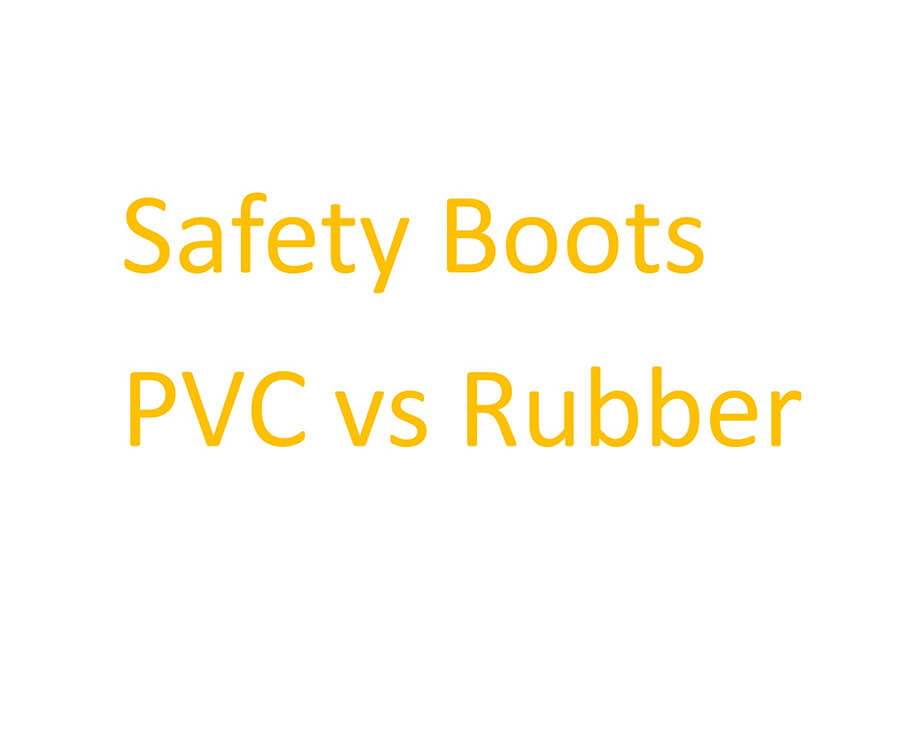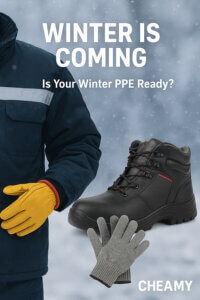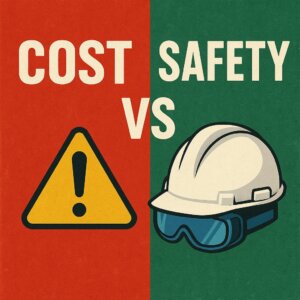In high-risk industries like construction, manufacturing, and chemical handling, reliable safety boots are non-negotiable. PVC (polyvinyl chloride) and rubber are the two dominant materials for protective footwear, but their differences impact performance, durability, and cost. This guide compares PVC and rubber safety boots across critical factors—from slip resistance to industry certifications—to help you make an informed decision.
Part 1: Material Properties & Core Performance
PVC Safety Boots
Pros:
- Lightweight: 30-40% lighter than rubber, ideal for workers standing or walking for extended periods.
- Cost-Effective: Lower material and production costs suit tight budgets.
- Chemical Resistance: Resists weak acids, alkalis, and oils, making them suitable for labs or light industrial use.
- Easy Maintenance: Smooth surfaces repel mud and moisture; clean with a damp cloth.
Cons:
- Poor Slip Resistance: Risky on wet/oily surfaces; stiffens in cold (<5°C), increasing fracture risk.
- Durability Issues: Wears faster than rubber; yellows over time.
- Environmental Concerns: Contains plasticizers; non-biodegradable (banned in some regions).
Rubber Safety Boots
Pros:
- Superior Protection: Natural/synthetic rubber resists punctures, impacts (up to 200J per EN ISO 20345), and abrasion.
- High Slip Resistance: Deep treads and high-friction soles excel on oily or uneven terrain.
- Temperature Resilience: Flexible from -30°C to 100°C; ideal for extreme climates.
- Eco-Friendly: Natural rubber is biodegradable; complies with REACH and OSHA standards.
Cons:
- Heavier: Can cause fatigue during long shifts.
- Higher Cost: Priced 30-50% above PVC due to complex manufacturing.
- Poor Breathability: Requires moisture-wicking liners to prevent sweating.
Part 2: Use Cases & Industry Standards
When to Choose PVC Safety Boots
- Light-Duty Work: Warehouses, food processing, or dry environments without sharp debris.
- Short-Term Projects: Temporary roles or seasonal work prioritizing affordability.
- Damp (Non-Oily) Conditions: Waterproof for cleaning jobs but avoid oil-exposed areas.
When to Choose Rubber Safety Boots
- High-Risk Industries: Construction, mining, or oil/gas sectors requiring puncture/impact protection.
- Extreme Temperatures: Freezer warehouses, foundries, or outdoor winter work.
- Regulated Environments: Mandatory EN ISO 20345 S3 (waterproof, anti-puncture) or ASTM F2413-11 compliance.
Part 3: Buying Tips & Certifications
Key Selection Criteria
- Slip Ratings: Opt for SRC-rated rubber soles or PVC boots with textured treads.
- Certifications: Verify EN ISO 20345 (EU), ASTM F2413 (US), or CSA Z195 (Canada) markings.
- Comfort Features: Look for rubber boots with EVA midsoles or PVC boots with breathable mesh liners.
Decoding EN ISO 20345
- S1: Basic protection (anti-static, energy absorption) for light machinery.
- S3: Waterproof, puncture-resistant, and anti-slide for construction.
- HRO: Heat-resistant outsoles (300°C+), critical for welding.
Part 4: FAQs
Q1: Are PVC boots safe for winter? A: No. PVC hardens in cold, reducing grip. Choose rubber boots with Arctic-grade insulation.
Q2: Which boots are best for electricians? A: Rubber boots with EH (Electrical Hazard) or SD (Static Dissipative) ratings. Avoid PVC due to poor insulation.
Q3: How to extend boot lifespan? A:
- Rubber: Rinse off chemicals; store away from UV light.
- PVC: Avoid petroleum products; use shoe trees to prevent warping.
Part 5: Final Recommendations
- Budget Pick for Light Use: PVC boots like PAMAX PH09009FEH (EN ISO 20345 certified).
- Premium Heavy-Duty Choice: Rubber boots like IronSteel T1231 (S3/HRO-rated).
Always prioritize certified safety over cost. Replace boots if soles wear below 1.5mm or toe caps crack.








